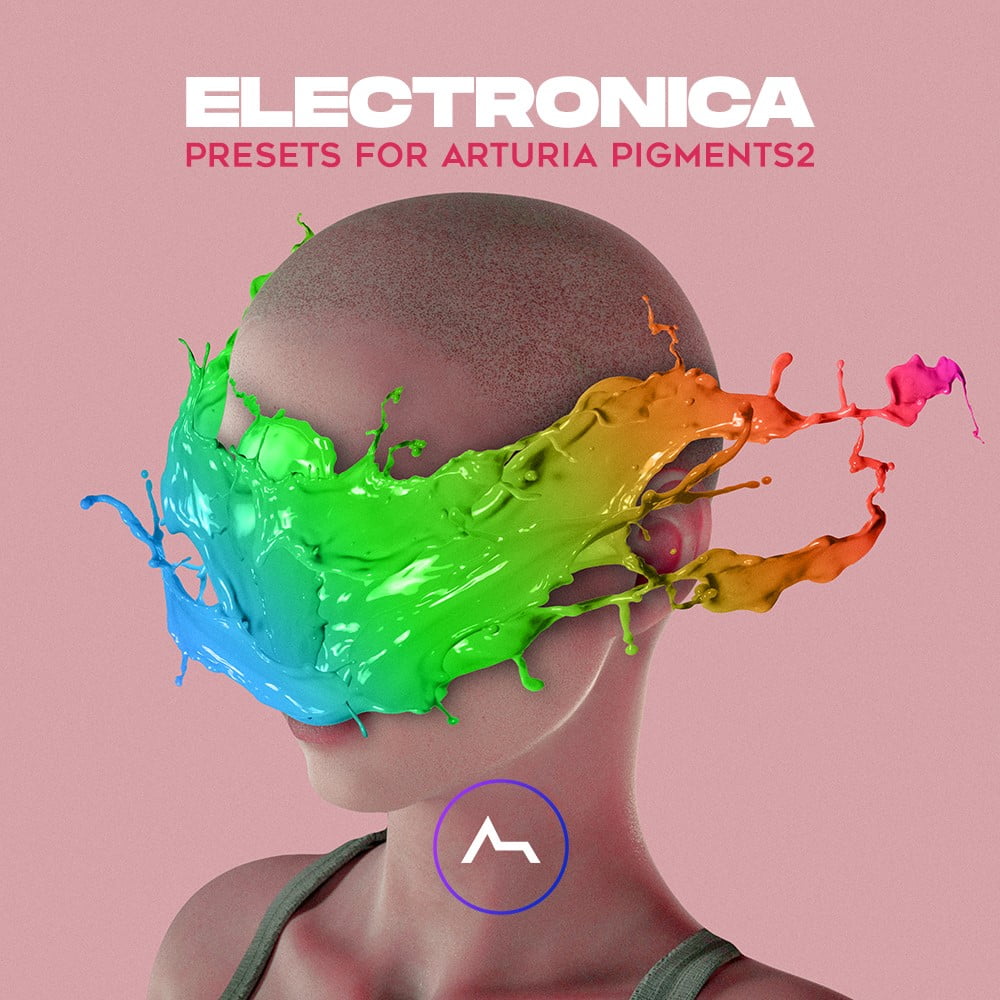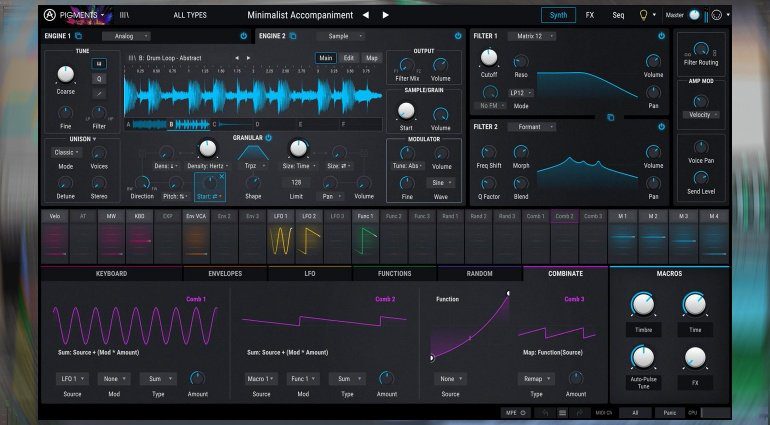


Finally, there is the Super mode which increases the number of voices in the style of the Roland Jupiter SUPERSAW.

Then there is a Chords mode which allows you to choose a chord preset. We get a Classic mode which allows you to increase the number of voices. The second global parameter we love is the Unison mode. This allows you to tune the synth in an explicitly musical manner. You can select which notes you want to omit from the coarse tuning knob. The first worth mentioning is the Mod Quantize. The Analog Synthesizer has some global parameters that apply to each oscillator. That’s a great feature, we’ve docked other synths for lacking visuals like that. You’ll quickly notice the oscillators display the waveforms and even display their movement. You can activate key tracking, FM synthesis, and adjust the waveform of each. I’m far from being an expert, but in the short amount of time I spent testing Pigments, I thought that I understood what sound design heaven feels like.The Analog Synthesis engine mode opens three oscillators for adjustment. You may find the colorful interface is, in fact, quite easy-to-use, so it won’t take you long until you become familiar with even the most advanced options.įor starters, you should browse the huge library of presets and figure out the instrument’s capabilities. Thankfully, Arturia has implemented a few in-app tutorials that should get you started. If you’re new to the world of synths, the crowded interface may seem a bit overwhelming. It’s already obvious that this is one of the most versatile virtual synths available. Moreover, you get two filters, modulation from three envelopes and three LFOs, three effect buses with three effects each, an arpeggiator/sequencer, and plenty of other features. Finally, Sample mode gives you access to hundreds of creative samples that you can edit and use to build your soundscapes. Wavetable mode employs, well, wavetable synthesis, enabling you to morph waveforms in many different ways. That may not sound like a lot, until you realize that each of them can be used in three separate modes: Analog, Wavetable, and Sample.Īnalog mode is your basic subtractive synthesis, with each engine being able to handle three oscillators at the same time.

In order to produce its bright and colorful sounds, Pigments employs two sound engines. While some instruments can only employ one type of synthesis, others, like Pigments, can do a whole lot more. While many will argue that the sound produced by hardware synths is difficult to achieve in the realm of digital, the versatility and flexibility of virtual instruments are also hard to beat.Īs you probably know, there are many types of synthesis available: subtractive, additive, wavetable, frequency modulation, sample-based, etc. The world of virtual synthesizers is vast and fascinating.


 0 kommentar(er)
0 kommentar(er)
